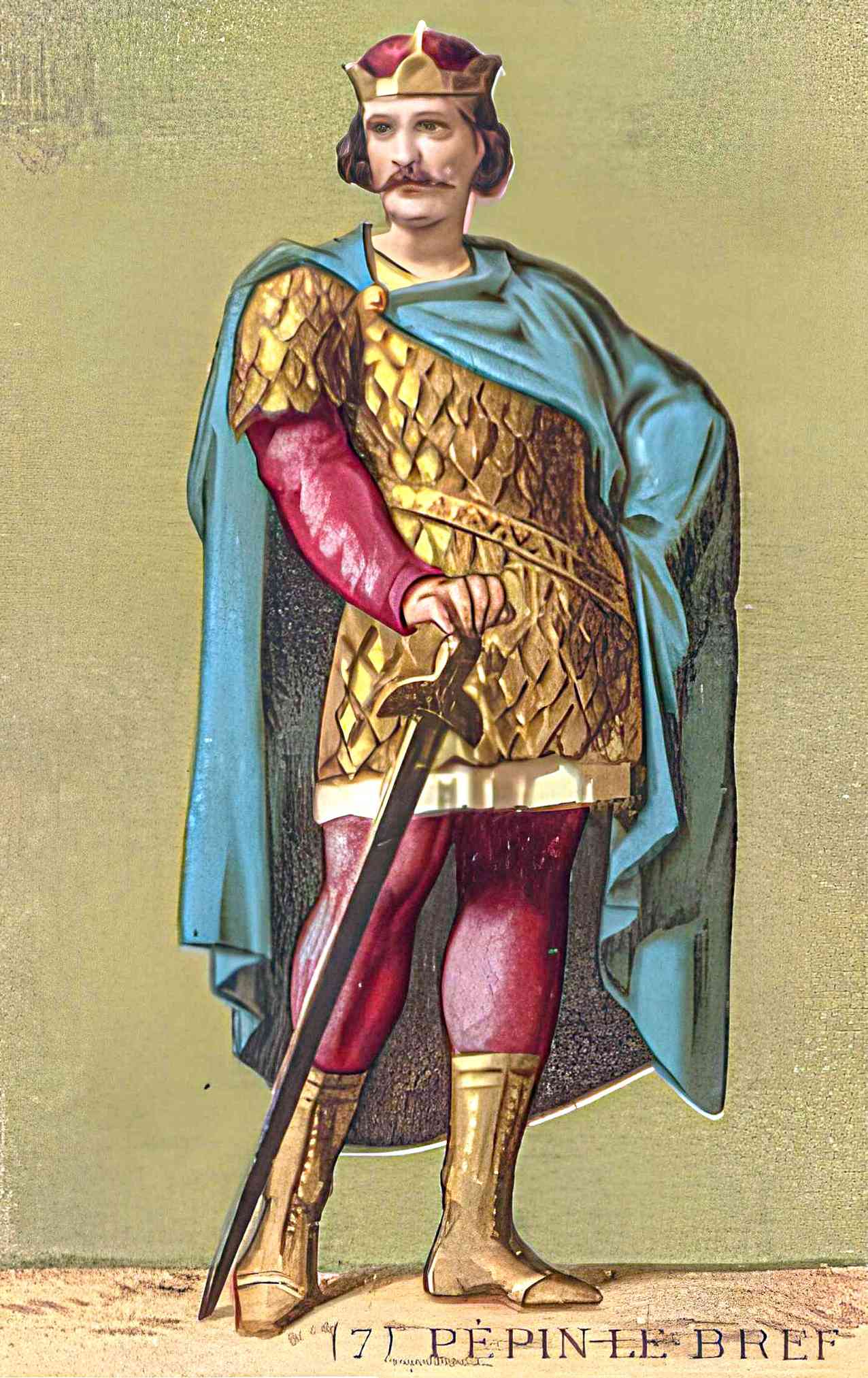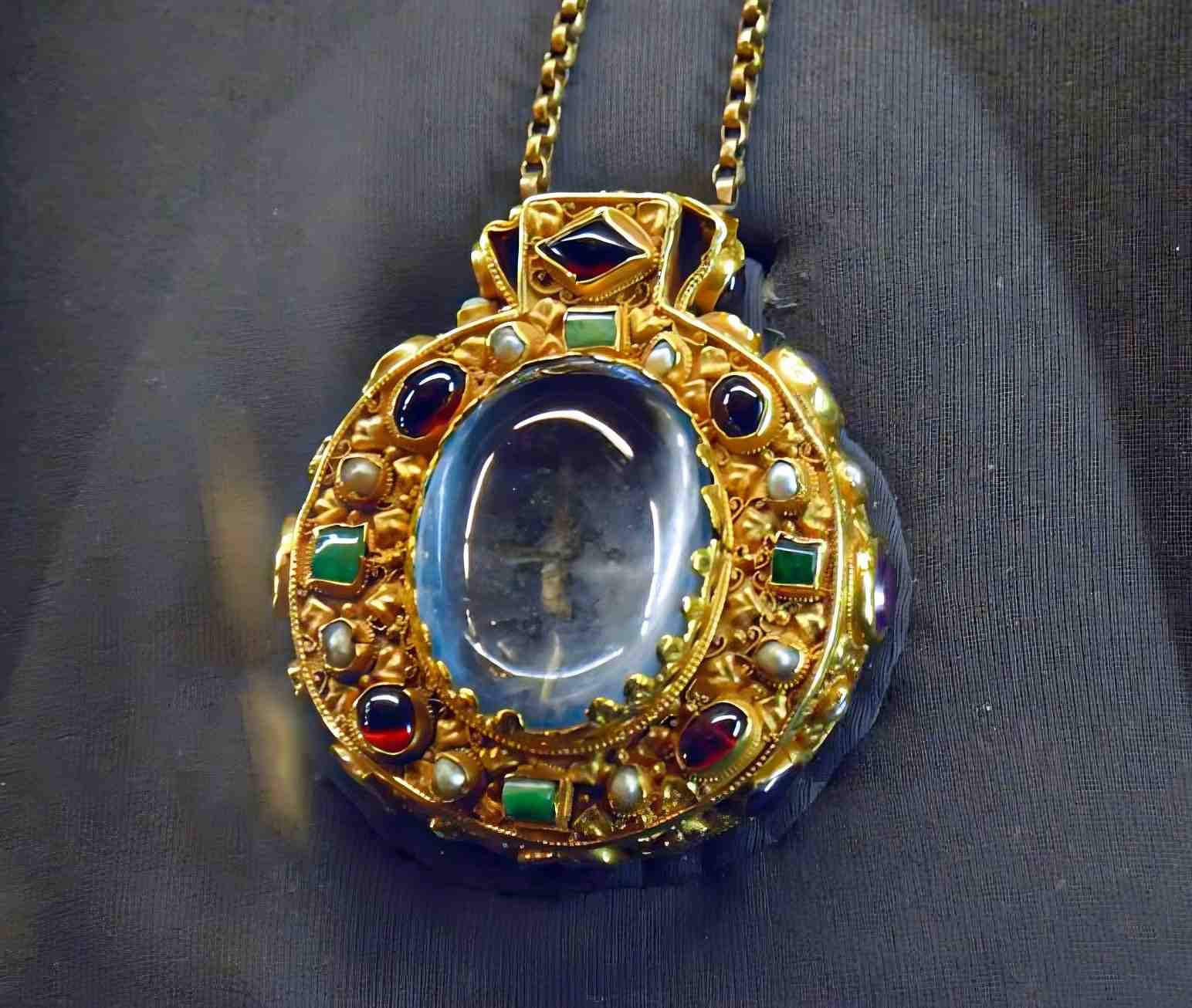How tall was Pepin the Short? Pepin III (714–768), often known as Pepin the Younger, was a major figure in early medieval Europe. From 751 until 768, he ruled as king of the Franks and was instrumental in founding the Carolingian dynasty. Charlemagne and the Carolingian Empire owe much to the stability that Pepin established in Western Europe. The mystery surrounding Pepin’s height and the question of how tall Pepin the Short was is still a mystery without concrete evidence.
And the earliest evidence regarding Pepin III being called “the Short” actually comes from the 11th century, two centuries after his death.
Curiosity Regarding Pepin the Short’s Height

The disparity between Pepin the Short’s moniker and the successes of his reign has led many to speculate about the king’s actual height. His influence on the Frankish realm and the later Carolingian reign makes Pepin the Short’s real height intriguing.
But the reality is that, over the course of history, many notable people have been given illustrative titles and descriptions that did not accurately represent their actual status. For instance, we know that Napoleon’s height was inaccurately described as short, but it was just his towering soldiers who surrounded him all the time.
Considering the contradiction of Pepin III’s moniker “the Short”, you might be wondering if there are any hard proofs or reputable sources that might shed light on Pepin the Short’s height.
The short answer is no. How tall Pepin the Short was is not known. But if we had to speculate based on the average height of the time, Pepin the Short’s height could be less than 5 feet 7 inches (170 cm).
But there is more to this story.
Lack of Historical Records

The lack of reliable historical sources from the 8th century makes it difficult to learn about Pepin the Short’s physicality, such as his height. Physical descriptions of people in historical records from this time, such as their height, are sketchy at best.
Rather than focusing on the personal details of their kings, chroniclers of the time recorded the major political events, military operations, accomplishments, genealogical lineage, and problems with the reigns. Recording the height of ancient and medieval figures was never a common practice.
Due to its relative insignificance, the height of the medieval kings and queens was seldom addressed or documented in these accounts. This is also true when it comes to Charlemagne’s height as the son of Pepin the Short. The nature of these chronicles contributes to the lack of facts concerning Pepin the Short’s height today.
But you can always make educational guesses:
Theories and Speculations on How Tall Pepin Was

Why was Pepin called the Short? Numerous historians and academics have spoken on the subject of Pepin the Short’s height, each with their own theory and opinion. The following are the most widely held beliefs and speculations about how tall Pepin the Short was:
Theory One: He Was Just Shorter
Pepin III might be given the nickname “the Short” because he was obviously shorter than other people of his day. We know for a fact that following the Norman Conquest in 1066, the average height of a man living at the end of the early medieval period was around 5 feet, 7.7 inches (172 cm). Today, this figure is around 5 feet 11 inches (180 cm).
Let’s say even if Pepin’s height was around the 5 feet 7 inches (170 cm) mark, that would still be enough to name the king “the Short”.
Theory Two: He Was Just Relatively Shorter
However, the same hypothesis also points to the fact that many members of the Frankish aristocracy were quite tall and intimidating, suggesting that the word “short” might just be a relative term in relation to Pepin’s family.
This theory assumes that Pepin the Short was probably of ordinary height for his period but seemed smaller compared to his ancestors. Considering Charlemagne’s tall height of 6 feet and 0.5 inches (1.84 meters), this approach holds some weight. Because Charlemagne was considered a giant at the time.
Pepin was the son of Charles Martel, who in 732 led the French to victory against the invading Muslims at the Battle of Tours. And Charles Martel is never described for his short stature. It is also possible that he was taller than his son, Pepin.
Theory Three: A Misunderstanding of His Latinized Name
During the Middle Ages, kings often derived Latinized versions of their names to emphasize their connection to the Roman Empire. The name Pepin was also known as Pippin and Peppin, and the Latinized version of this name would be Pippinus, Pipinus, and Pepinus.
Since the word “Pippinus” meant “little Pippin” or “young Pippin” in Latin, Pepin’s moniker “the Short” might have been a misreading of his Latinized name.
Theory Four: A Shift in Wording

Since Charlemagne’s father, great-grandfather (Pepin of Herstal), and great-great-great-grandfather (Pepin of Landen), as well as two of his sons, all had the same name (Pepin), it became essential to give each branch of the Carolingian Pepin family a unique moniker.
Pepin of Herstal, the grandfather of Pepin the Short, was called “brevis,” which means “short” in Latin. And the earliest evidence regarding Pepin III being called “the Short” actually comes from the 11th century, two centuries after his death.
According to one theory, the word “minor” (as used by the Young) has been replaced with “brevis” and then “parvus” in time, which simply meant “short.”
Long after Pepin’s death, in the late 9th century, the monk Notker Balbulus wrote a little treatise on the lives of Pepin and Charlemagne. Pepin the Hunchback, the illegitimate oldest son of Charlemagne, is mentioned.
The contemporary historian Einhard, the author of the Vita Karoli, depicts this son as handsome but hunched-back. Using Einhard’s story, Notker also mentions that he, too, had a hunchback but includes the observation that he was a dwarf.
“Pippin himself, a dwarf and a hunchback, was cruelly scourged, tonsured, and sent for some time as a punishment to the monastery of Saint Gall; the poorest, it was judged, and the straitest in all the emperor’s broad dominions.”
Early Lives of Charlemagne by Eginhard and the Monk of St. Gall, edited by Prof. A. J. Grant – Gutenberg.org
Theory Five: He Ruled for Too Short
An alternative theory proposes a distinct sense of the word “Short.” Some historians disagree on whether the nickname was meant to reflect Pepin’s small stature or the short duration of his rule. Pepin III ruled from 751 until his death in 768, a period of 17 years.
While 17 years of reign may not be that short, his son Charlemagne ruled for 46 years, and this was around the typical length of a king’s rule for the day.
Therefore, calling him “Short” might be a way to draw attention to the fact that he was the first monarch of the Carolingian dynasty. His dynasty would be linked to Charlemagne in later history.
Visual Representations of Pepin the Short
Pepin the Short is not shown in any contemporary artwork. All the creative representations of him have been made after his death. Since there aren’t many historical paintings or sculptures from the 8th century, even fewer paintings show Pepin explicitly.
Only some later works attempted to depict Pepin the Short’s height. Some medieval manuscripts show him towering above his contemporaries, but they were probably intended to convey a sense of his superiority. At the same time, some later paintings tended to minimize Pepin’s height, perhaps owing to his moniker.
Who Was Pepin the Short?
King of the Franks from 751 to 768, Pepin III was also known as Pepin the Short. He founded the Carolingian dynasty and was Charlemagne’s father. He was the son of Charles Martel, who in 732 led the French to victory against the invading Muslims at the Battle of Tours. St. Boniface’s mission to convert the Saxons and reform the Frankish church had his backing.
In Italy, he helped the church defeat the Lombards and give them territories that would later become the Papal States. In 754, Pope Stephen II anointed him. In 768, he passed away, and his remains were moved to the Basilica of St. Denis.
Despite being one of the most important European kings in history, having a predecessor and a successor nicknamed “the Great” (Charlemagne) and “the Hammer” (Charles Martel) while he was referred to as “the Short” didn’t help the popularity of Pepin III in history.
Fun Fact
His name in French, Pépin le Bref, is associated with the expression “bref, comme dirait Pépin,” which roughly translates to “well, as Pépin would say.” In this context, “bref” means “short,” giving rise to the humorous connection between Pepin’s nickname and the expression.
References
- Early Lives of Charlemagne by Eginhard and the Monk of St Gall Edited by Einhard and Notker Balbulus, Gutenberg.org
- The Franks, from their first appearance in history to the death of King Pepin – By Walter Copland Perry · 1857
- The History of Charlemagne By George Payne Rainsford James · 1832






